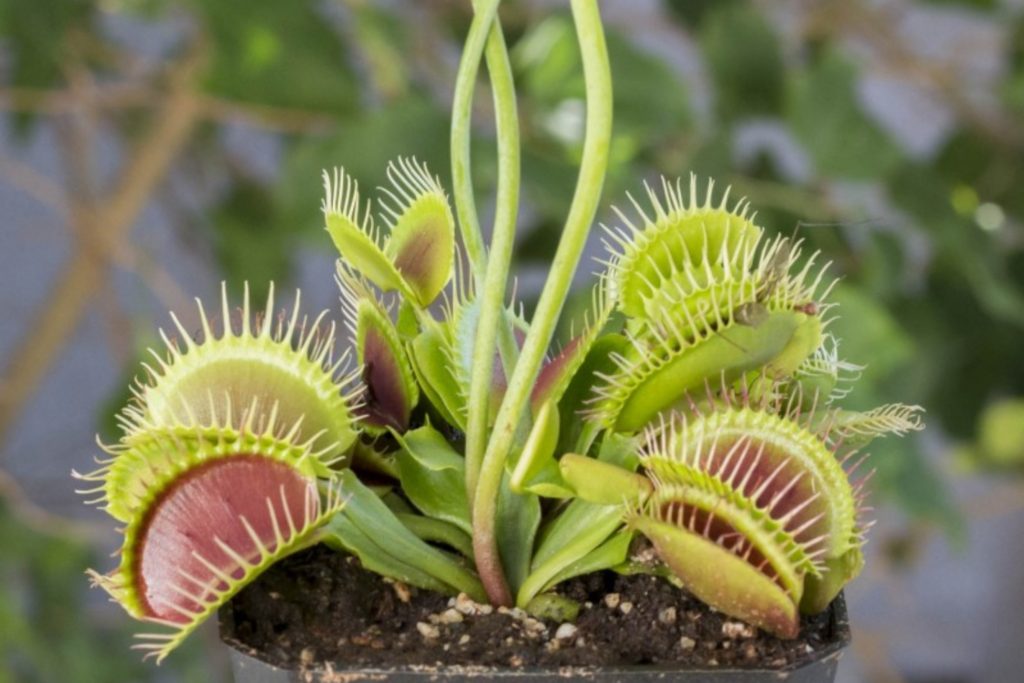Venus Fly Trap Flower Stalk
The Venus Fly Trap is a fascinating plant that has captured the attention of many throughout the years. Known for its carnivorous tendencies, this plant is revered by many, but little is known about its flowering habits. In this post, we will delve into the world of Venus Fly Trap flower stalks, exploring their purpose and potential drawbacks.
Pain Points of Venus Fly Trap Flower Stalk
Many Venus Fly Trap owners find themselves wondering why their plant has suddenly sprouted a tall flower stalk. While some see it as a beautiful addition to their plant's appearance, others worry that it may be harming the plant in some way. Additionally, it is common for people to question whether or not the flower stalk will negatively affect their plant's ability to catch insects and consume them.
What is the Purpose of Venus Fly Trap Flower Stalk?
The Venus Fly Trap's flower stalk serves the purpose of reproduction. By growing a tall stalk topped with a cluster of flowers, the plant is able to attract pollinators such as bees and flies. These insects then transfer pollen between flowers, allowing for the plant to produce seeds and continue its life cycle.
Understanding the Benefits and Drawbacks of Allowing Venus Fly Trap to Flower
While the flower stalk may be beneficial for pollination and reproduction, it does come with some potential drawbacks. When a Venus Fly Trap devotes its energy towards growing a flower stalk, it may result in a decreased ability to catch insects and obtain necessary nutrients. Additionally, once the plant has produced seeds, it may begin to die back, leaving it weakened and vulnerable to disease.
Should You Let Your Venus Fly Trap Flower?
As with many things related to plant care, the decision of whether or not to let your Venus Fly Trap flower ultimately comes down to personal preference. If you are hoping to produce seeds and propagate your plant, then allowing it to flower may be a good choice. However, if you are primarily focused on keeping your plant healthy and thriving, then it may be best to remove any flower buds as they emerge.
My Personal Experience with Venus Fly Trap Flower Stalk
As an avid plant lover, I have had many Venus Fly Traps over the years. While I initially enjoyed seeing them flower, I soon realized that it was not worth the potential harm it could cause to the plant. In my experience, removing any flower stalks that emerged allowed my Venus Fly Traps to stay healthy and strong.
How to Care for a Venus Fly Trap that has Flowered
If you do choose to let your Venus Fly Trap flower, it is important to continue providing it with the care it needs. This includes keeping it in well-draining soil, providing it with ample amounts of light and water, and avoiding overfeeding or overhandling the plant.
What Happens After a Venus Fly Trap Flowers?
After a Venus Fly Trap has produced seeds and its flower stalk has died back, it may enter a period of dormancy. During this time, it is important to provide it with minimal care and allow it to rest. Once it begins to show signs of new growth, you can resume your normal care routine.
FAQs about Venus Fly Trap Flower Stalk
Q: Will letting my Venus Fly Trap flower harm it?
A: While allowing your Venus Fly Trap to flower may cause it to devote energy towards reproduction instead of catching insects, it is unlikely to cause any long-term harm to the plant.
Q: Can I remove a flower stalk from my Venus Fly Trap?
A: Yes, you can remove a flower stalk from your Venus Fly Trap by snipping it off at the base with a pair of sharp scissors or pruning shears.
Q: How often do Venus Fly Traps flower?
A: Venus Fly Traps typically flower in the spring or early summer, though the specific timing may vary depending on growing conditions.
Q: Can Venus Fly Traps produce seeds without flowering?
A: No, Venus Fly Traps require pollination in order to produce seeds, and this process occurs via the plant's flower stalk.
Conclusion
Venus Fly Trap flower stalks serve an important purpose in the plant's reproductive cycle, but they also come with potential drawbacks. Ultimately, the decision of whether or not to let your plant flower is up to you, but it is important to weigh the benefits and drawbacks before making a decision. By providing your Venus Fly Trap with proper care, you can ensure that it stays healthy and strong regardless of whether or not it produces a flower stalk.
Gallery
Venus Fly Trap Flowering Help : Carnivorousplants

Photo Credit by: bing.com / venus carnivorousplants
Venus Fly Trap Flower Stalks - YouTube

Photo Credit by: bing.com / flower venus trap fly
Venus Flytrap (Dionaea Muscipula) - Carnivorous Plant Resource

Photo Credit by: bing.com / flower flytrap venus fly trap stem plant muscipula dionaea stalk plants flowers flowering stalks maximum send spring size carnivorousplantresource
Carnivore Garden | Drawbacks To Allowing Your Venus Flytrap To Flower

Photo Credit by: bing.com / flytrap garden drawbacks
Should You Let The Venus Flytrap Flower - Hungryplant.com

Photo Credit by: bing.com / venus flytrap flytraps stalk grow should